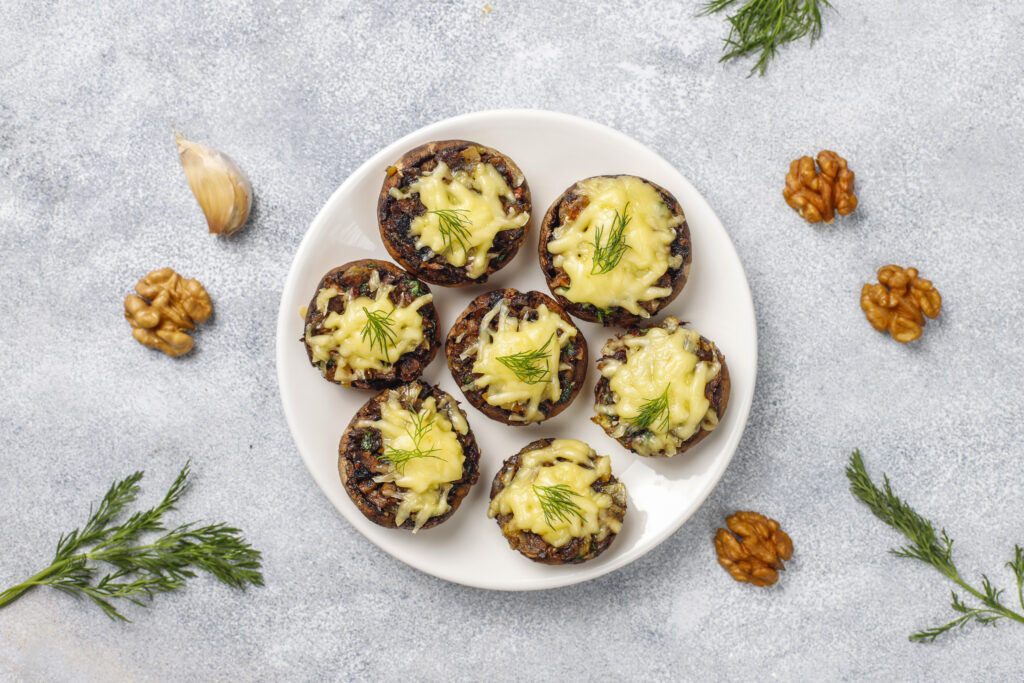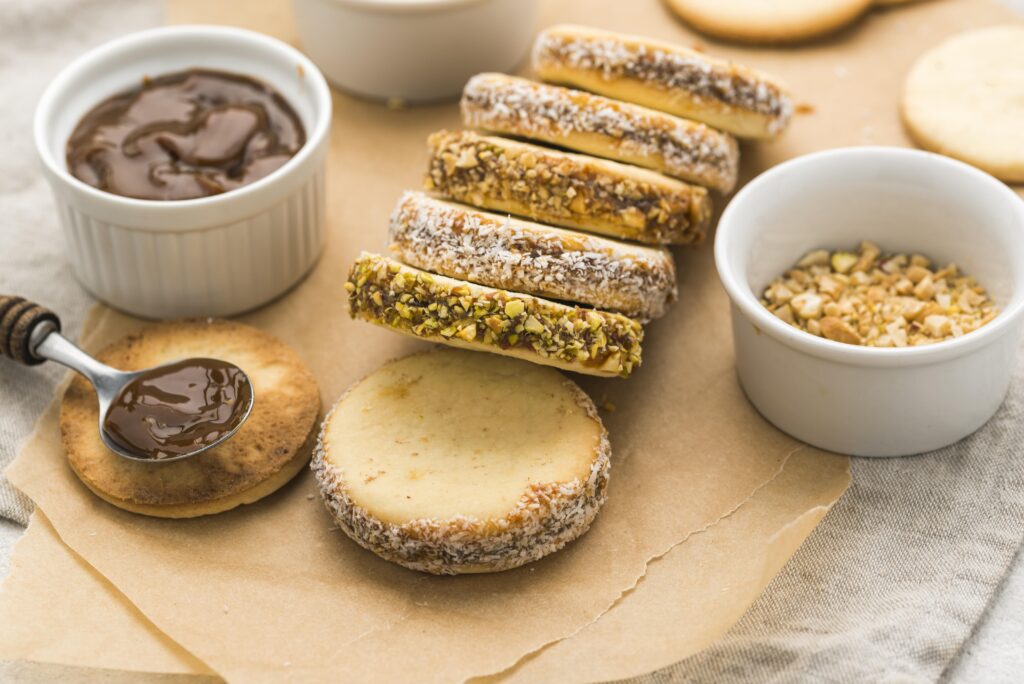Are caiques sopes gluten free? Have you ever wondered if these delectable Mexican treats are safe for those with gluten sensitivities?
Let’s delve into this culinary question and uncover the truth behind caiques sopes and their gluten content.
In short, yes, caiques sopes can indeed be gluten free depending on how they’re prepared.
Traditionally, these savory snacks are made from masa harina, which is naturally gluten free.
However, it’s essential to be cautious of cross-contamination during cooking processes that may introduce gluten.
Curious to learn more about gluten-free Mexican cuisine and discover delicious recipes for caiques sopes?
Our expert chefs and nutritionists have curated a comprehensive guide to help you navigate the world of gluten-free dining while indulging in flavorful dishes.
Let’s explore together and savor the delights of gluten-free caiques sopes!
Here, are sopes gluten free?
Are caiques sopes gluten free?
Yes, caiques sopes can be made gluten-free. Traditional caiques sopes are made with masa harina, which is naturally gluten-free as it’s made from corn.
However, it’s essential to ensure that all ingredients used in the preparation, such as toppings, sauces, and fillings, are also gluten-free.
Checking labels for gluten-containing ingredients and using certified gluten-free products can help maintain the dish’s gluten-free status.
Overall, with the right ingredients and preparation methods, caiques sopes can indeed be enjoyed as a gluten-free option
What are ciaques sopes?
It seems there might be a mix-up in the term “caiques sopes.”
If you mean “sopes,” they are a traditional Mexican dish made from a thick, round base of masa (corn dough).

The masa is shaped into a small, thick tortilla with pinched sides to form a shallow cup, which is then fried or grilled.
This base is then topped with various ingredients such as refried beans, meats (like shredded chicken, beef, or pork), lettuce, cheese, onions, salsa, and crema (Mexican sour cream).
Sopes are versatile and can be customized with a variety of toppings, making them popular street food in Mexico and a beloved dish in Mexican cuisine.
They are naturally gluten-free when made with masa harina, a type of corn flour, but it is important to ensure that all toppings and accompaniments are also gluten-free if dietary restrictions require it.
What the taste of ciaques sopes?
“Caiques sopes” seems to be a mistaken term. Assuming you mean “sopes,” their taste is a delightful combination of flavors and textures.
The base of a sope, made from masa harina, has a slightly earthy and nutty flavor with a soft yet firm texture due to its thicker, fried or grilled preparation.
This masa base is mildly savory on its own but serves as an excellent foundation for a variety of toppings.
The toppings bring a burst of flavors: refried beans add creaminess and a subtle richness, while meats like shredded chicken or beef provide a savory and sometimes spicy element, depending on the seasoning.
Fresh ingredients such as lettuce, onions, and tomatoes add crispness and a refreshing contrast.
Cheese, often crumbly and salty, and crema, which is tangy and smooth, enhance the overall taste. Salsa adds a final zesty and spicy kick, making each bite a deliciously layered experience.
What are Caiques Sopes?
It appears there may still be some confusion with the term “Caiques sopes.”
If you mean “sopes,” they are a traditional Mexican dish.
Sopes are made from a thick round of masa (corn dough), which is shaped with raised edges to hold toppings and then fried or grilled. The texture of the masa base is firm yet slightly crispy on the outside and soft inside.
These masa bases are typically topped with a variety of ingredients, including refried beans, meats such as shredded chicken, beef, or pork, and garnishes like lettuce, cheese, onions, salsa, and crema (Mexican sour cream).
The combination of these toppings creates a flavorful and textured dish, balancing savory, spicy, and fresh elements.
If “Caiques” refers to something else, such as a brand or specific variation, more context is needed to provide an accurate description.
However, in the context of Mexican cuisine, sopes are a beloved and versatile dish.
Origin and history
It seems there might still be a mix-up with the term “Ciaques sopes.” Assuming you mean “sopes,” their origin and history are rooted in Mexican cuisine.
Sopes trace their beginnings to pre-Columbian times, originating from the indigenous peoples of central and southern Mexico.
These early civilizations, such as the Aztecs and other Mesoamerican cultures, relied heavily on maize (corn) as a staple food, using it to create various dishes.
The creation of sopes involved shaping masa (corn dough) into small, thick discs with raised edges, which were then cooked on a comal (a traditional flat griddle).
This preparation method allowed the masa to hold an array of toppings, making it a practical and versatile food item.
Over the centuries, sopes evolved, incorporating ingredients introduced by the Spanish, such as beef, pork, and dairy products like cheese and crema.
Today, sopes are enjoyed throughout Mexico and have become a staple in Mexican cuisine, celebrated for their adaptability and rich, layered flavors.
Ingredients used
“Ciaques sopes” appears to be a misunderstanding of the term “sopes.”
Assuming you are referring to sopes, they are a traditional Mexican dish made with a variety of ingredients.
The primary component is the base made from masa harina (corn flour), mixed with water and a pinch of salt to form a dough.

This dough is then shaped into thick, small discs with raised edges to hold the toppings and fried or grilled until slightly crispy.
Typical toppings for sopes include:
- Refried beans: A layer spread on the masa base, providing a creamy texture and savory flavor.
- Meats: Shredded chicken, beef, pork, or sometimes chorizo, seasoned and cooked to add a rich, hearty element.
- Fresh vegetables: Lettuce, tomatoes, and onions, adding freshness and crunch.
- Cheese: Often queso fresco or cotija, which are crumbly and slightly salty.
- Crema: Mexican sour cream, adding a tangy and creamy finish.
- Salsa: Various types of salsa, providing spice and acidity to balance the flavors.
These ingredients come together to create a deliciously complex and satisfying dish, highlighting the versatility and rich culinary traditions of Mexican cuisine.
Traditional preparation methods
Assuming you mean “sopes,” here is a step-by-step process for making traditional Mexican sopes:
Here, are huaraches food good?
Ingredients:
- 2 cups masa harina (corn flour)
- 1 1/2 cups warm water
- 1/2 teaspoon salt
- Cooking oil for frying
- Toppings: refried beans, shredded meat (chicken, beef, pork), lettuce, cheese (queso fresco or cotija), crema (Mexican sour cream), salsa, onions, and tomatoes.
Instructions:
- Prepare the Dough:
- In a large bowl, mix masa harina with salt.
- Gradually add warm water to the masa harina, mixing until a dough forms.
- Knead the dough for a few minutes until smooth and pliable. If the dough is too dry, add a little more water.
- Shape the Sopes:
- Divide the dough into small balls, about the size of a golf ball.
- Flatten each ball between your palms or using a tortilla press to form discs about 3-4 inches in diameter and about 1/2 inch thick.
- Pinch the edges of each disc to create a raised border, forming a shallow cup.
- Cook the Sopes:
- Heat a griddle or skillet over medium-high heat. Cook each sope for about 2 minutes on each side until lightly browned and partially cooked.
- Remove from the griddle and let cool slightly.
- Fry the Sopes:
- In a large frying pan, heat about 1/2 inch of oil over medium-high heat.
- Fry the sopes in batches, cooking each side for about 1-2 minutes until golden brown and crispy.
- Drain on paper towels to remove excess oil.
- Assemble the Sopes:
- Spread a layer of refried beans on each sope.
- Add your choice of toppings: shredded meat, lettuce, onions, tomatoes, cheese, crema, and salsa.
- Serve:
- Serve the sopes immediately, while they are still warm and crispy.
How to make caiques sopes?
It seems there is still some confusion with the term “caiques sopes.” Assuming you mean “sopes,” here is a step-by-step process for making them:
Ingredients:
- 2 cups masa harina (corn flour)
- 1 1/2 cups warm water
- 1/2 teaspoon salt
- Cooking oil for frying
- Toppings: refried beans, shredded meat (chicken, beef, pork), lettuce, cheese (queso fresco or cotija), crema (Mexican sour cream), salsa, onions, and tomatoes.
Instructions:
- Prepare the Dough:
- In a large bowl, mix 2 cups of masa harina with 1/2 teaspoon of salt.
- Gradually add 1 1/2 cups of warm water to the masa harina, mixing until a dough forms.
- Knead the dough for a few minutes until it becomes smooth and pliable. If the dough feels too dry, add a little more water.
- Shape the Sopes:
- Divide the dough into small balls, roughly the size of a golf ball.
- Flatten each ball between your palms or using a tortilla press to form discs about 3-4 inches in diameter and around 1/2 inch thick.
- Pinch the edges of each disc to create a raised border, forming a shallow cup shape.
- Cook the Sopes:
- Heat a griddle or skillet over medium-high heat. Place each sope on the griddle and cook for about 2 minutes on each side until they are lightly browned and partially cooked.
- Remove from the griddle and let them cool slightly.
- Fry the Sopes:
- In a large frying pan, heat about 1/2 inch of cooking oil over medium-high heat.
- Fry the sopes in batches, cooking each side for about 1-2 minutes until they are golden brown and crispy.
- Remove from the oil and drain on paper towels to absorb excess oil.
- Assemble the Sopes:
- Spread a layer of refried beans on each sope.
- Add your choice of toppings: shredded meat, lettuce, onions, tomatoes, cheese, crema, and salsa.
- Serve:
- Serve the sopes immediately, while they are still warm and crispy.
Gluten-Free Alternatives in Caiques Sopes
Related faq’s
Is all caiques sopes gluten-free?
How can I make sure my caiques sopes are gluten-free?
To ensure your caiques sopes are gluten-free, follow these steps:
- Choose Certified Gluten-Free Ingredients: Use certified gluten-free masa harina (corn flour) for the base of your sopes. Look for labels that specifically state “gluten-free” to avoid any cross-contamination risks during processing.
- Read Labels: Check the labels of all ingredients, including toppings like sauces, seasonings, meats, cheeses, and beans, to confirm they are gluten-free. Look out for ingredients such as wheat, barley, and rye, which contain gluten.
- Avoid Cross-Contamination: Use separate utensils, cutting boards, and cooking surfaces for gluten-free ingredients to prevent cross-contamination from gluten-containing foods.
- Homemade Sauces and Seasonings: Make homemade sauces and seasonings using gluten-free ingredients like fresh herbs, spices, and natural thickeners. This way, you can control what goes into your dish and avoid gluten additives.
- Check Kitchen Tools: Ensure that kitchen tools and equipment, such as pans, griddles, and fryers, are thoroughly cleaned and free from any gluten residue before use.
- Communicate Dietary Needs: If dining out or ordering from a restaurant, communicate your gluten-free dietary needs clearly to the staff to ensure they prepare your caiques sopes safely.
By following these steps and being diligent about ingredient selection and kitchen practices, you can enjoy delicious and safe gluten-free caiques sopes.
Are there gluten-free caiques sopes available in restaurants?
Yes, gluten-free caiques sopes are available in some restaurants. Many restaurants are now offering gluten-free options to cater to customers with dietary restrictions or preferences.
To ensure that the caiques sopes served in a restaurant are gluten-free, it’s essential to communicate your dietary needs clearly to the staff.
Some restaurants may have dedicated gluten-free menus or labels indicating gluten-free options.
They may also use certified gluten-free ingredients and follow strict protocols to prevent cross-contamination during preparation.
Before ordering, ask the staff about their gluten-free offerings, how they prepare their caiques sopes, and if they take measures to avoid cross-contact with gluten-containing ingredients.
Being proactive and communicating with the restaurant staff can help you enjoy a safe and delicious gluten-free dining experience with caiques sopes.
Conclusion:
Yes, caiques sopes are generally gluten-free. Made from corn dough, they lack wheat or gluten-containing ingredients.
However, cross-contamination can occur during preparation, so it’s crucial to ensure they’re made in a gluten-free environment.
Always check labels and ask about ingredients to be certain of their gluten-free status.

